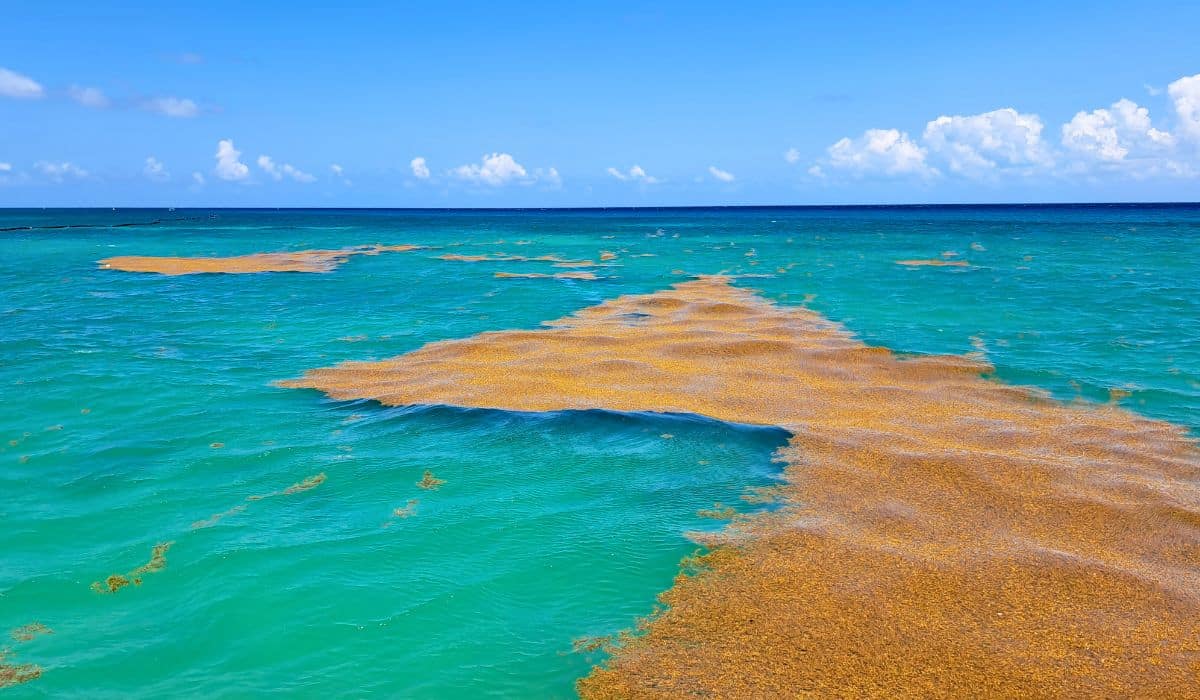Quintana Roo’s Sargasso Monitoring Network, which floats about 100 km east of the Guanaja and Roatan Islands, has detected another huge amount of sargassum seaweed. The Mexican state on the Yucatan Peninsula is home to famous beaches such as the resort towns of Cancun and Cozumel and the boho-chic beach destination of Tulum.
Due to the strong east-west blowing wind, the monitoring network anticipates this this mass of 5,000 km2 (3,100 mi2) will reach the waters of the Mexican Caribbean in the coming weeks. They expect the masses to arrive in waves that will hit mainly the southern zone of the state. in about two weeks.

Join or FB Seaweed reporting groups:
This comes after about 135 tons were expected to wash ashore on the calm waters of the Mexican Caribbean in mid-April. According to the Sargassum Monitoring Network, a total of between 200 and 300,000 tons of sargassum will be washed on the Mexican Caribbean coast this year.

Source: Traveling Lifestyle
The decaying, smelly algae consists of gas-filled structures that keep the brown seaweed afloat and make their way to all the Caribbean islands, the Gulf of Mexico and Southeast Florida. When washed up on shore, it not only stinks, but it is not recommended to swim next to it as it can cause the skin to turn red and cause an itchy rash.
Although harmful to humans, the seaweed helps shoreline stability and is home to many marine species. The algae help with erosion and provide beach plants with nutrients.
Along with the Mexican Caribbean, the massive amounts of sargassum have impacted other Caribbean destinations such as the Dominican Republic, Jamaica and even the Florida Peninsula.
In the Dominican Republic, hoteliers and local authorities clean beaches every morning and install ocean barriers between May and August while sargassum peaks line the country’s coast.





